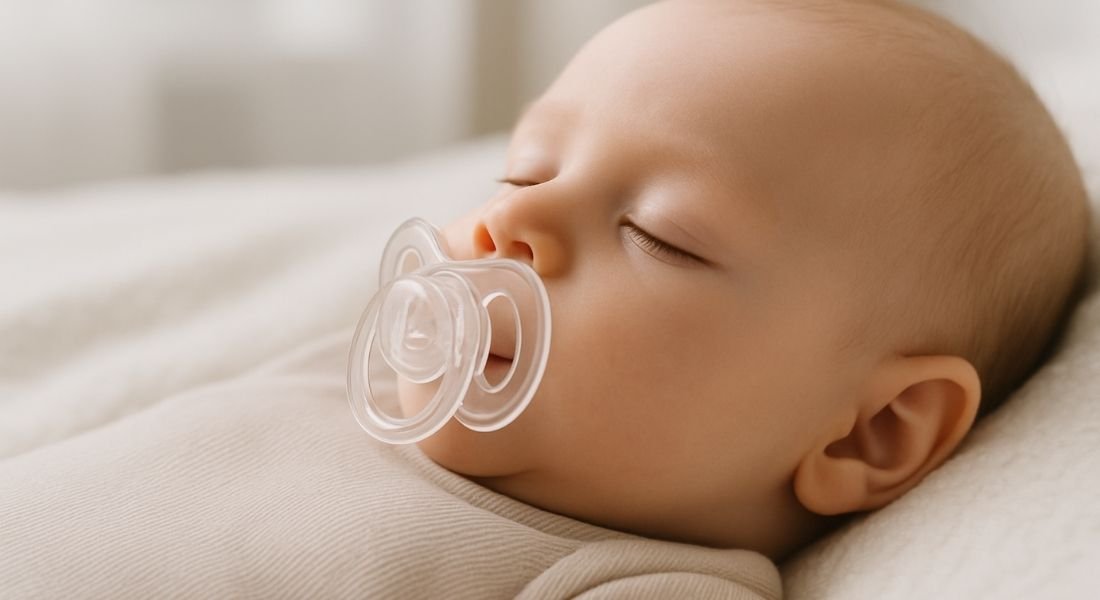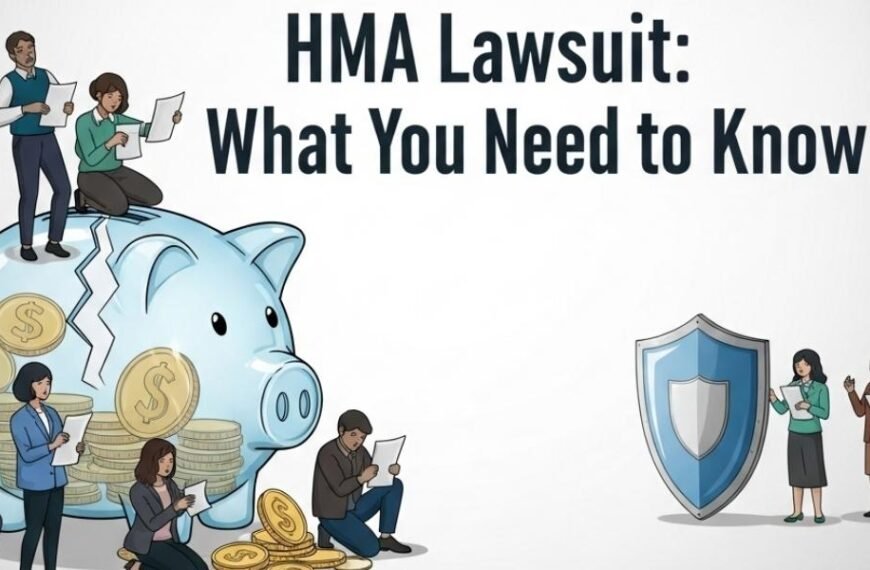Pacifier teeth are a common concern among parents, especially when their child’s beloved pacifier starts to affect their smile. While pacifiers can be incredibly soothing for infants, prolonged use may lead to dental problems as your child grows. Understanding how pacifier use impacts oral development is key to making the right choices for your baby’s dental health.
What Are Pacifier Teeth?
Pacifier teeth refer to changes in a child’s dental structure caused by long term pacifier use. Typically, this condition involves misaligned teeth, bite issues or changes in the shape of the mouth.
It is often seen in children who continue sucking on pacifiers beyond infancy, especially past the age of three. These changes are not just cosmetic, they can affect jaw alignment, tooth eruption and even long term oral hygiene.
The sucking reflex is natural and beneficial in early infancy, but it becomes a problem when pacifier habits continue too long. Some of the most visible signs include front teeth that angle outward, gaps between teeth and even improper oral cavity development.
Why Pacifier Use Matters for Dental Health
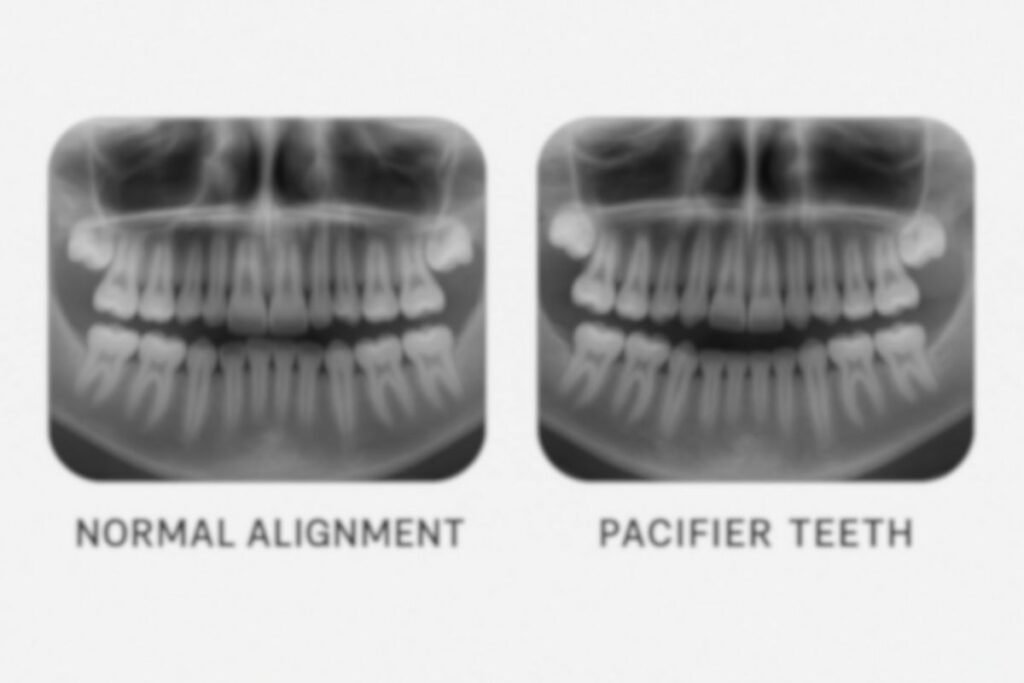
Pacifiers serve an important role in a baby’s life. They offer comfort, support self soothing and even reduce the risk of sudden infant death syndrome (SIDS) during sleep.
However, when pacifier use continues past the age of two or three, it may begin to impact baby teeth and future dental alignment. Dental growth and jaw development happen rapidly in the first few years.
Extended pressure from a pacifier, especially a traditional, non orthodontic type that can lead to shifting teeth or changes in the roof of the mouth. Pediatric dentists often highlight pacifier teeth damage as one of the leading preventable oral issues in toddlers.
When Does a Pacifier Start Affecting Teeth?
Many parents ask, At what age does a pacifier affect teeth? Experts suggest that any pacifier use beyond 24 months starts to pose a risk. However, the most significant dental issues often arise when pacifier habits continue past 36 months.
That is why many pediatric dentists recommend beginning weaning between 12 to 18 months, even if it is gradual. Age appropriate weaning and using the right pacifier types can help avoid major issues. For example, orthodontic pacifiers are designed with a flat nipple shape to reduce pressure on growing gums and teeth.
The Benefits of Proper Pacifier Use
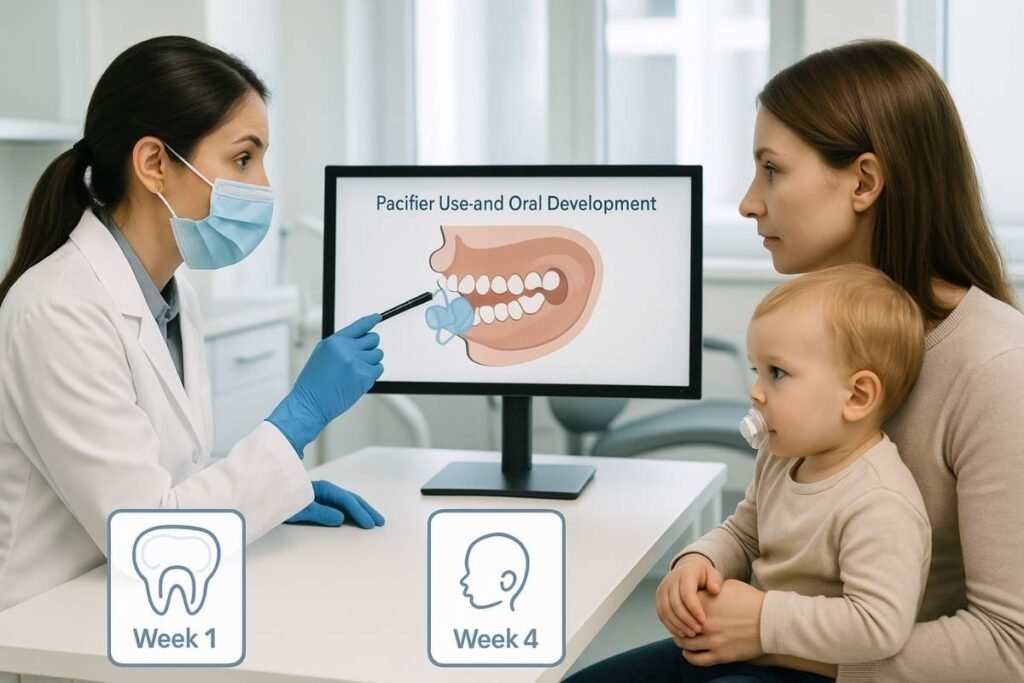
Used wisely, pacifiers can be incredibly beneficial:
- They help babies self soothe and regulate emotions.
- They may assist in sleep and calming during teething.
- They provide gum relief and oral stimulation during infant development.
- Pacifiers can prevent thumb sucking, which is harder to stop.
However, it is all about balance. Pacifier safety depends on duration, nipple shape, materials (always BPA free) and regular dental check ups. Understanding the pros and cons helps parents make informed decisions.
How to Avoid Pacifier Teeth: Actionable Strategies
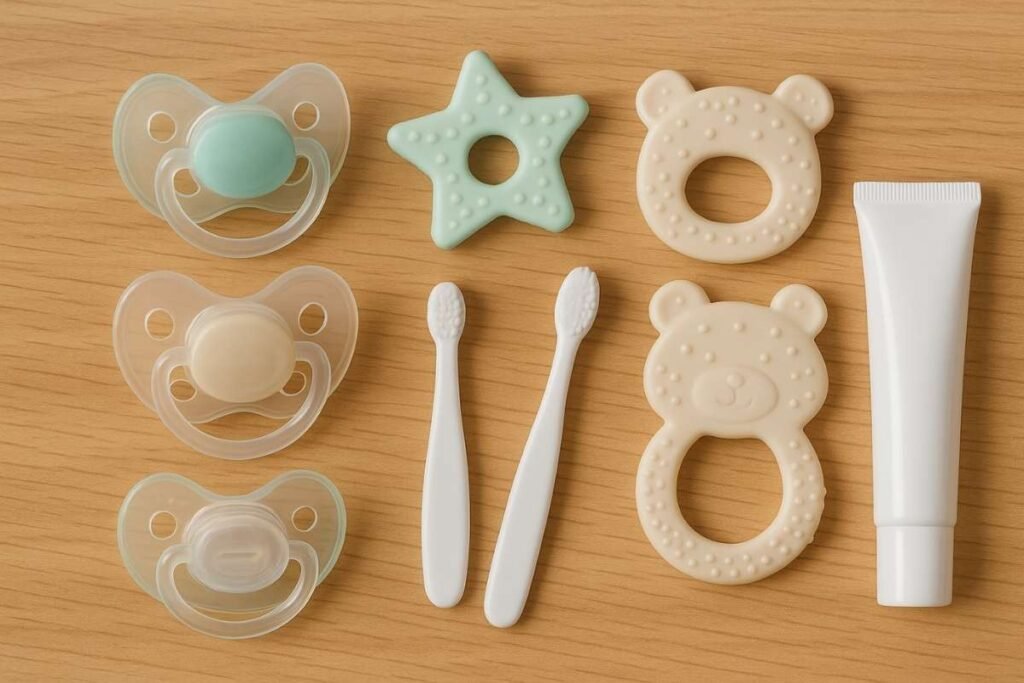
Avoiding pacifier teeth is not about quitting cold turkey. It is about making smart choices early on and knowing when to step in. Here are proven strategies parents can use:
Choose the Right Pacifier
Opt for orthodontic pacifiers with soft materials and flat, symmetrical nipple shapes. These are designed to minimize pressure on teeth and gums. Always choose age appropriate sizes to ensure comfort and safety.
Limit Use to Specific Times
Restrict pacifier use to sleep and nap times. Avoid using pacifiers during play or while your child is awake and active. This reduces dependency and lessens oral development impact.
Avoid Dipping in Sweet Substances
Never dip the pacifier in honey or juice. This not only increases the risk of tooth decay but also introduces sugary bacteria into the oral cavity. Gum sensitivity can worsen with cavities at such an early age.
Monitor for Signs of Dental Issues
If you notice teeth starting to protrude or your child having difficulty biting, it may be time to begin weaning. Schedule a dental check up to evaluate the impact of pacifier use on your child’s oral health.
Introduce Pacifier Alternatives
Teething toys, teething rings or comfort blankets can serve as excellent pacifier alternatives. These satisfy your baby’s need for oral stimulation without impacting dental alignment.
Start Weaning Early
The earlier you introduce weaning, the easier the transition. Experts recommend beginning the process around 12 months and fully weaning by 24 months. Pacifier withdrawal can be smoother when it’s gradual and supported with soothing techniques.
Clean and Store Pacifiers Properly
Pacifier hygiene matters more than you think. Always clean pacifiers daily, store them in a clean case, and replace them regularly. Poor pacifier cleaning can lead to oral infections, adding to dental health concerns.
Can Pacifier Teeth Be Fixed?
A common question is: Will pacifier teeth correct itself? The answer depends on the child’s age and the extent of dental changes.
In many cases, if pacifier use ends before the age of 2, the teeth can realign naturally without intervention. However, continued use past this age may require dental care or orthodontic treatment.
For example, How do I fix my 2 year old’s pacifier teeth? may involve consulting a pediatric dentist to assess if a dental appliance or watchful waiting is needed.
Dental intervention is often avoidable if parents follow pacifier guidelines and stay proactive. But if your child is over 3 and shows clear signs of misalignment or oral cavity development issues, seeking professional advice is the best course of action.
Pacifier Myths vs. Reality
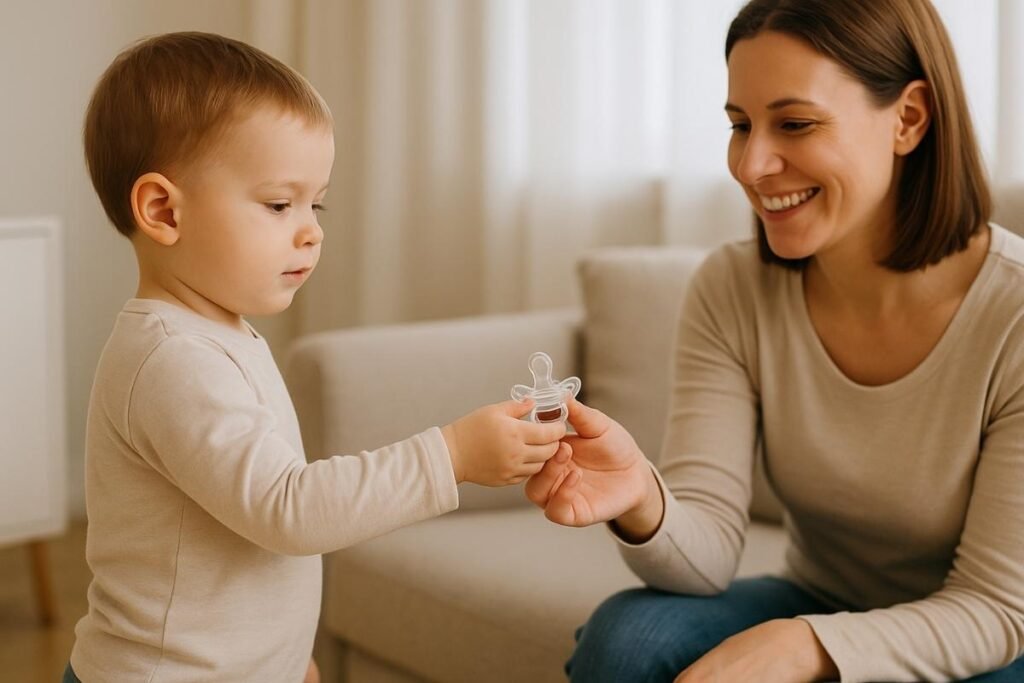
Many myths surround pacifier use. Let’s clear up a few:
- Pacifier teeth are just a myth. False. Prolonged pacifier habits can lead to visible dental issues.
- Orthodontic pacifiers eliminate all risk. Not true. While better than traditional shapes, they still pose risks if used for too long.
- Thumb sucking is safer than pacifiers. Actually, thumb sucking can be worse. It’s harder to break and has similar dental consequences.
- Pacifier use prevents teething discomfort. Not entirely. While soothing, pacifiers should be used alongside other remedies like gum massage or teething gel.
Conclusion
Pacifiers offer undeniable comfort and soothing benefits for infants. But as children grow, continued use can affect baby teeth, oral development and jaw alignment. The key to preventing pacifier teeth is knowing when to wean and how to choose the right products.
Stay mindful of your baby’s growth stages, prioritize pacifier safety and consult with a pediatric dentist regularly. Most importantly, trust your instincts and focus on what keeps your child healthy and happy both emotionally and dentally.
FAQs
What do pacifier teeth look like?
Pacifier teeth often involve outward tilting front teeth, an open bite or spacing between teeth. These signs typically appear after prolonged pacifier use.
How to fix pacifier teeth in toddlers?
Mild cases may correct themselves if pacifier use stops early. For more severe issues, a pediatric dentist might recommend orthodontic evaluation or interceptive care.
What is the best pacifier for teeth?
Orthodontic pacifiers with a flat nipple and soft materials are ideal. Look for BPA free, age appropriate options endorsed by pediatric dental associations.
Can pacifier teeth last into adulthood?
Yes, if the dental misalignment caused by pacifier use isn’t corrected in childhood, it can persist into adulthood and may require braces or other treatments.
Is there a pacifier teeth before and after comparison?
Yes, many pediatric dental clinics showcase before and after photos. These can highlight how pacifier induced issues are reversible with timely intervention.
How do I know it’s time to remove the pacifier?
If your child is approaching 24 months, showing signs of teeth movement or is highly dependent on pacifiers, it is time to start the pacifier removal process.

